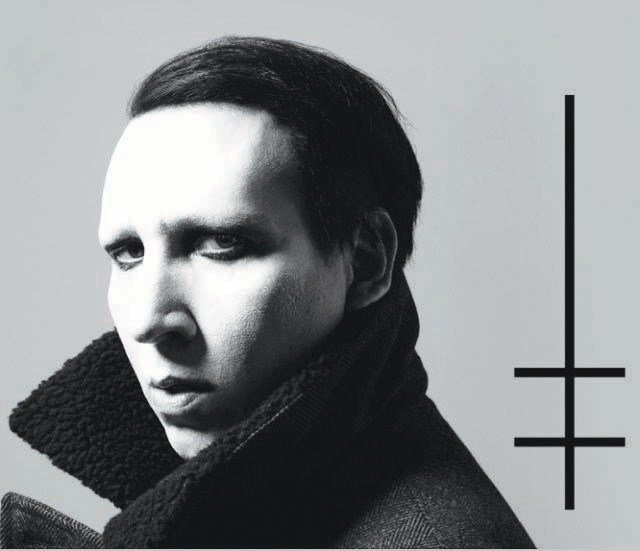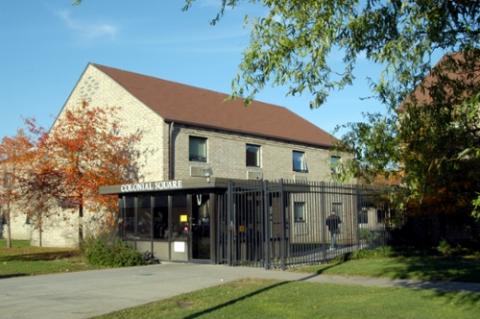
By Andy Sahadeo
You can almost taste the sexuality and maturity dripping from the soundscapes cultivated in Marilyn Manson’s 10th studio album, “Heaven Upside Down.” The titan of industrial metal returned in full force after his 2015 strong effort in “The Pale Emperor.” You can tell that even at this stage in his career, Manson continues to shatter sonic barriers and flesh out his world-renowned sound within the genre of industrial metal.
The album kicks off with the crushing “Revelation #12,” which explores the angrier side of Manson right off the bat. As a musician, it’s always interesting to analyze the production of sound – and the production here is absolutely fierce. The raw, distorted, lo-fi sound of the vocals transports the listener back to the times of “Antichrist Superstar” (1996) and “Holy Wood (In the Shadow of the Valley of Death)” (2000) with Manson’s signature anger-fuelled tirades.
Manson’s instrumentation was never known for being overly technical, instead opting for the utilization of drop tunings, fifth chords and electronic drums. This is not a stab at the instrumentation whatsoever – very few musicians can take such simple concepts and make them work, especially in a genre like metal that forces musicians to push the envelope in order to diversify their sound.
The fact remains that although Marilyn Manson’s band (a completely separate entity from Marilyn Manson himself) is all under his vision, his bandmates still create crushing riffs and infectious grooves. Tyler Bates, the lead guitarist on this album and the Hollywood film composer for films such as “Guardians of the Galaxy” and “300,” as well as Gil Sharone, former drummer of mathcore band The Dillinger Escape Plan, both deserve massive props for their musicianship on this album.
The album’s first single “WE KNOW WHERE YOU FUCKING LIVE” is a brilliant example of where Manson, Bates and Sharone all jell together in perfect harmony. The long, drawn-out buildup, the note bending and the haunting yet subtle synth that pervade the scene throughout the verse all lead to a devastating chorus that sees Manson yelling the song title to the point of near death. It’s a typical Manson banger that undoubtedly will have metalheads rejoicing in the sweet bliss of raging in the mosh pit on the Heaven Upside Down Tour (as soon as Manson recovers from his injury, of course).
Elements of gothic rock and blues also are audible in tracks like “Blood Honey” and “Threats of Romance,” respectively – owing up to Manson’s willingness to bend and meld genres even this late in his career. It’s almost as if you took Marilyn Manson, David Bowie and Stevie Ray Vaughn and threw all their sounds into a blender – it’s a pretty rewarding product in the end.
However, with all this praise comes some amount of criticism for the album. For one, several songs on the album such as “Tattooed in Reverse,” “SAY10” and “Saturnalia” all have a tendency to sound the same after a good run-through of the album. It’s not to say that these songs are necessarily bad, but Manson’s sound can get a little repetitive and muddy on the ears after some time. That usually tends to be the case in a pretty restrictive genre like industrial metal – and those songs definitely lean more on the industrial spectrum of sound given their heavy amounts of destructive synth.
Overall, “Heaven Upside Down” is an incredible album that mixes the perfect amount of throwback into Manson’s classic albums while incorporating that fresh, genre-bending sound unforeseen in performers around Manson’s age. After experimenting with the elements of blues and gothic rock on “The Pale Emperor,” Manson unveiled a new side of himself that was never heard of before. “Heaven Upside Down” does a great job in continuing that fleshing-out process. If you’re a metalhead or just someone who’s interested in the soundscapes of what metal is capable of, I highly recommend checking out “Heaven Upside Down.”






